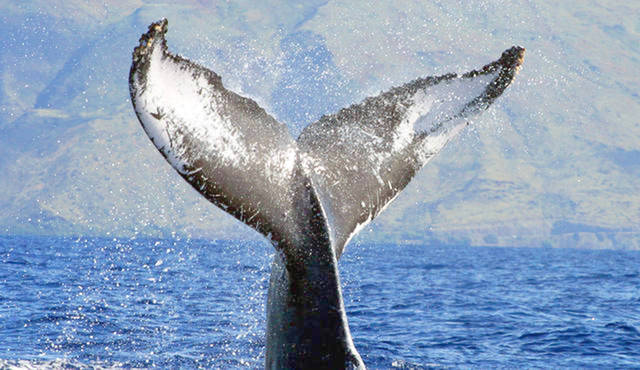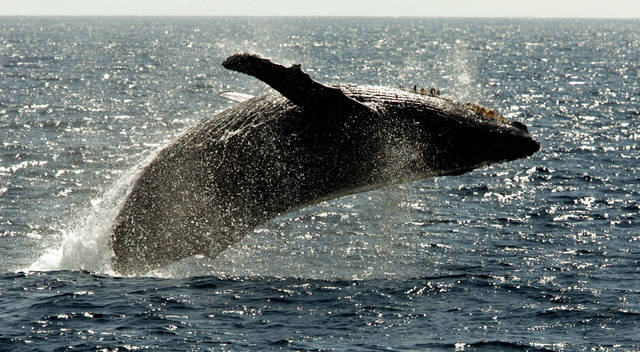KAELIA — Kohola Leo is again “Welcoming the Whales” at Kealia Bluff on Saturday in a ceremony that combines music, poetry and stories along the breezy Kealia cliffs overlooking the ocean.
It’s a celebration of the annual humpback whale migration. Every year the marine mammals leave their feeding grounds in Alaska for breeding in warmer southern waters of Hawaii, Mexico and southern Japan.
Organizers say it’s a public participation ceremony and “people are encouraged to bring songs, drums, musical instruments, poetry and stories of their connection to the cetacean world.”
“Whales are the sentinels of the ocean,” said Koloha Leo chairperson Gordon LaBedz. “They deserve our love and respect. We at Kohola Leo hope to educate and inform people about the whales and their ocean home.”
Since 2015 there has been an uptick in research on the migration patterns of the humpback whales as well as research on their songs and other patterns — one of the reasons for that is there have been fewer sightings of the animals in recent years.
Each year there are three whale counting events — one each in January, February and March — where volunteers work with the Hawaiian Islands Humpback Whale National Marine Sanctuary.
In 2018, the count on Kauai averaged, over a 15-minute time period, three whales in January, two whales in February and less than one whale in March.
Compare that to the same counts in previous years and there’s a drop in sightings — Kauai averaged four sightings in March 2013, three whales in 2014 and two in 2015.
Researchers gathered in November to compare notes on the downward trend of sightings, and pointed to potential reasons.
Marc Lammers, research coordinator for the agency’s Hawaiian Islands Humpback Whale National Marine Sanctuary, said researchers pointed to variables like warming waters, ghost gear, noisy ocean conditions, population plateau and a simple change in migration patterns to places like the Northwestern Hawaiian Islands could all have an impact.
Hoping to find answers, scientists are documenting the number of mother/calf pairs seen in the Hawaiian Islands and are studying whale songs, ocean noise, marine debris and all the other factors to answer questions like why the decline in mother and calf pairs by about 80 percent between 2014 and 2018.
The current government shutdown has prevented the release of the 2019 whale count schedule, usually released on the National Oceanic and Atmospheric Administration’s website, but the first count is usually scheduled for the last Saturday of the month — that would be Jan. 26.
Meanwhile, the Welcome the Whales ceremony will be held at 4 p.m. at Kealia Bluff, north of Kapaa and along the makai side of Kuhio Highway.
Kohola Leo is also partnering with Malama Maha’ulepu in their annual catamaran sail fundraiser, set for Jan. 19 and departing from Kukui’ula Harbor.
Tickets are $50 each minimum donation for the fundraiser and the money goes toward furthering the Malama Maha’ulepu mission to preserve the Maha’ulepu area “as an undeveloped area with compatible agricultural, cultural, educational and recreational uses” according to the organization.
To sign up, go to malama-mahaulepu.org.



